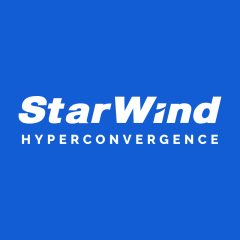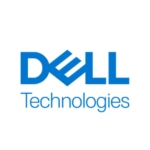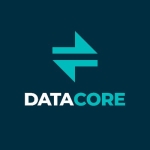What is our primary use case?
We needed a reliable shared storage solution for our VMware vSphere Essentials solution so we could implement vMotion and High Availability features. We decided to utilise a vSAN solution to reduce costs after looking at the price of external storage solutions.
In our environment, we have a 3-server VMware vSphere Essentials Plus solution that consists of 16 x HDD and 8 x SDD on-server storage. The solution is attached to 1GB network for production but we also have 10GB network connections available for direct-connectivity between servers.
The StarWind vSAN solution was implemented as a hyper-converged solution meaning that everything runs on the VMware vSphere solution.
How has it helped my organization?
The StarWind vSAN solution was implemented according to our project plan with minimal outages to existing workloads. We have had no issues with the solution and it works very well with minimal administrative effort.
Recently, we had a memory failure that caused one of our VMware servers to crash. Due to the shared storage provided by the StarWind vSAN, all virtual machines on the failed server were able to failover to another server. Our helpdesk didn't receive any user complaints during the time that this happened. Once we resolved the issue, the shared storage resynched itself automatically.
We now have the ability to run critical workloads on the VMware infrastructure and have already proceeded to migrate active directory and SAP Business One workloads onto this platform.
What is most valuable?
We have found the solution surprisingly simple to use. The management console allows us to monitor the solution and we have configured email alerts to alert us about critical issues. These alerts have been proven to work in an actual failure scenario, for example, when we had a memory issue with one of our servers that caused the entire server to crash. The management console also allows us to monitor the solution performance and provides us with access to system logs.
The level of support provided by StarWind both during pre-sales and post-implementation has been excellent. The solution validation session with StarWind engineers was one of the best we have experienced and the vendor has also demonstrated a willingness to create a long-term relationship.
The solution is also quite flexible. As an example, other vSAN solutions that we looked at had more stringent requirements regarding mixed HDD/SSD storage which wouldn't have worked in our environment.
What needs improvement?
The main thing I would like to see improved is the level of documentation. I had some initial difficulties understanding the solution which could have been solved via additional documentation aimed at newcomers to their solution. Although the solution does admittedly have many moving parts, I found that internal knowledge transfer to my peers was not that difficult. Hence I'm convinced that better documentation would have helped.
I would also like to see a better system implemented for obtaining updates for solution components. The system at the moment works on a request/response model.
For how long have I used the solution?
We've been using this solution since the start of this year (2021).
What do I think about the stability of the solution?
The solution has proven to be reliable with the need for minimal administrative effort. During an actual failure with memory on one of our servers, everything worked exactly as planned. We didn't even receive any issues/complaints from users via our helpdesk.
What do I think about the scalability of the solution?
During the solution validation session with the vendor, we spoke about benchmarking the product. After performing the recommended tests, we were satisfied that the solution would meet our performance needs (both in terms of storage and networking).
How are customer service and technical support?
We haven't had any issues with the solution so have had no need to request service/technical support. However, our experience during our project makes us believe we are in good hands if we ever need anything in the future.
Which solution did I use previously and why did I switch?
We did not use a different solution. We initially implemented our VMware vSphere Essentials solution using direct storage and didn't have access to features such as vMotion and high availability. The StarWind vSAN solution allowed us to implement shared storage and pave the way to migrate critical workloads onto the VMware infrastructure.
How was the initial setup?
We complicated the initial setup process a bit because we wanted to perform the design, implementation, and migration ourselves. This led to some difficulties in terms of initially understanding the solution. StarWind helped to fill in the gaps and our implementation and migration went completely to plan with little need for downtime. We were able to implement the solution on two servers while keeping our workloads running on the third server. We then migrated the workloads and built the remaining server.
What about the implementation team?
We wanted to perform the design, implementation, and migration of the solution ourselves. We asked for help where needed during the design stage and found the vendor was very knowledgeable and could quickly answer all of our questions. We performed the implementation ourselves and then conducted a solution validation session with the vendor. During this session, the vendor validated that everything was configured according to their best practices and also performed some advanced tuning. We also had an open-ended discussion about how to operate the system. This solution validation session was one of the best I have ever experienced.
The level of support from the vendor throughout the entire project has been excellent and they have been more than willing to develop a long-term relationship.
What was our ROI?
We were price-sensitive and wanted to minimize expenditure on additional hardware. The ability to utilize vMotion and High Availability features in our VMware infrastructure has already repaid the cost of the solution.
What's my experience with pricing, setup cost, and licensing?
We found the StarWind vSAN solution was cost-effective compared to alternatives. You should talk to the vendor (or a good partner) about your needs because there are some differences in price based on your environment. We also recommend purchasing support.
In our case, we purchased StarWind vSAN for vSphere Essentials Edition which included 1 year of standard annual support and maintenance.
Which other solutions did I evaluate?
We initially looked at several external shared storage solutions and found them to be cost-prohibitive. We then evaluated vSAN solutions from HPE (this was discontinued) and the native solution from VMware. The native solution from VMware had fewer moving parts than the StarWind vSAN solution, but was more expensive and didn't provide the required level of flexibility that we needed regarding mixed HDD/SDD storage.
What other advice do I have?
We strongly recommend that you develop a good relationship with the vendor (or a good partner). In our experience, they played a key role in the success of the solution.
Which deployment model are you using for this solution?
On-premises
Disclosure: My company does not have a business relationship with this vendor other than being a customer.
















